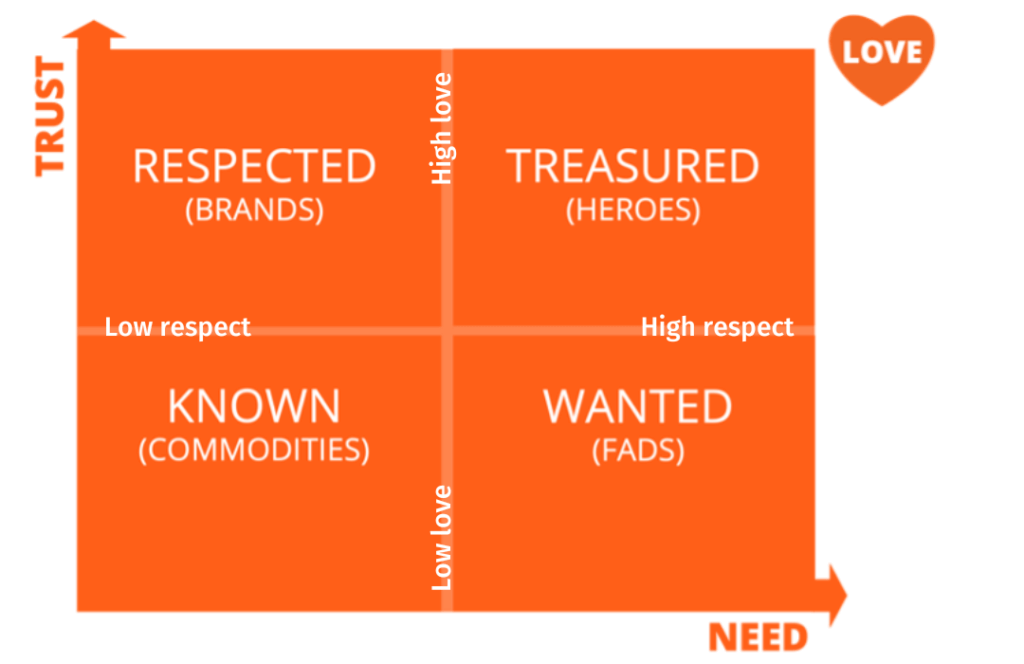When you experience something for the first time all your combined perceptions of that new experience are filtered in your brain so you can evaluate an opinion of your experience.
The type of experience determines the number and nature of perceptions required to form that opinion. There are more perceptions required to evaluate a new restaurant than a new washing powder. The restaurant will need all your senses to create the perceptions needed but some are far more important than others.
There are functional, practical, operational (head-centric) perceptions like ‘is it easy to find?’; ‘can you park easily?’; ‘does the food arrive promptly?’; ‘are the prices reasonable?’.
Then there are emotional, inspirational (heart-centric) perceptions like ‘are the staff friendly, attentive and helpful?’; ‘is the ambience, right?’; ‘is the food super tasty?’.
All brands have functional (head-centric) perceptions and emotional (heart-centric) perceptions. However, emotional perceptions are far more powerful. Emotion-based messaging for long-term brand building is at least 2x more powerful than practical messaging according to Gartner.
What’re the components of Head and Heart brands?
HEAD
– Functional
– Data-driven
– Operational
– Practical
– Outcome driven
HEART
– Emotional
– Impactful
– Sensual
– Engaging
– Belief driven
Kevin Roberts, CEO of Saatchi & Saatchi, took heart branding even further. He said all brands sit on a matrix with a respect and love axis and to be really treasured, a hero brand, you needed equal amounts of high respect and love. He called these hero brands ‘Lovemarks’ and we all have them. Our aspirational brands. (One day I’ll own an Aston Martin).

In truth, all brands are a balance between head and heart messaging. The advertising guru David Ogilvy once said that customers need rational excuses to support their emotional decisions.
We are currently working with a brilliant health & safety training business. They have plenty of practical reasons why their clients would use their training. They have lots of courses covering every facet of health and safety training. Their prices are competitive, and they have won plaudits for their training quality.
However, to stand out in their marketplace we agreed together that they move their messaging towards the heart end of the spectrum and concentrate on the emotionally driven outcome of their training. That they save lives.
Now their website includes real ‘Saving Lives Stories’ from clients due to their training. Their new brand strapline is ‘Together. Saving Lives.’ Their call to action is ‘Ready to save lives?’
Crucial to this is authenticity. You cannot pretend to be a heart brand. You’ll be found out and that would be a disaster for your brand. Our client’s training really does save lives, almost every day.
So, where is your brand on the Heart / Head spectrum? Where should it be? How can you create emotional connections with your customers which will be far more powerful than practical connections?
If you’d like to discuss it, please give us a call. That’s exactly how our relationship with the training business started.
You can contact us at hello@yellowyoyodev.wp.indigotree.dev, call 01908 980 400 or leave a message here.
Bryan



